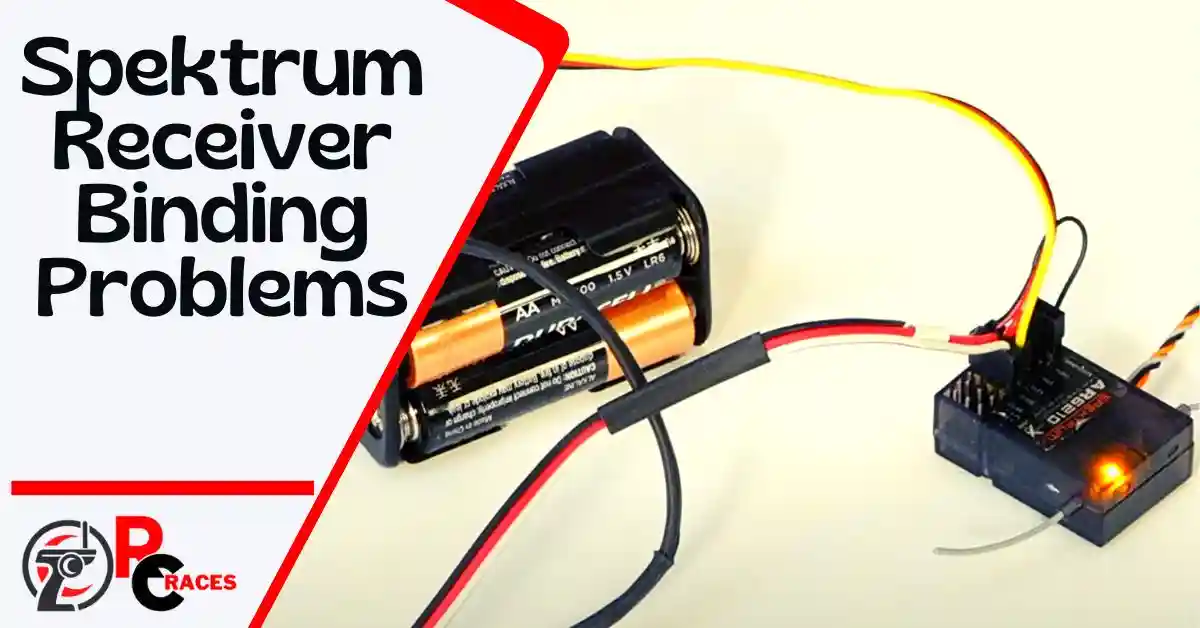Receiver setup is confusing and time-consuming. After all the efforts, seeing your receiver not binding can be frustrating.
With this, you might be looking at all the areas of the Spektrum receiver binding problems.
Your receiver won’t bind for many reasons. For example, you are keeping the receiver too close to the transmitter. The transmitter may also emit a higher frequency than the receiver while the antenna may not function. In this scenario, it is advised to look for devices that suit the frequency of the transmitter.
You may be focused on some good options to let the devices bind. Let us help you out with a more in-depth analysis of the problem.
We have worked to see where the problem lies to advise some good solutions.
Why Is Spektrum Receiver Not Binding?
Not having enough experience in remote control setup can be frantic. But you will catch up fast. It is not rocket science, binding is easier than you think.
After all the hard work, you may find that the Spektrum receiver is not working. It is sad to know that the devices are not binding.
Problems like Spektrum receiver not blinking are common.
Understandably, things can get stressful when you are faced with this trouble. To make things better, we have explained the reasons behind such trouble.
Reason 1: Distance Is Too Close
You have to find out how close you are making the receiver stay with the transmitter. A close distance means they are not going to bind. You will find that the receiver is making buzzy noise.
The signals are usually very strong when the receiver is working close to the transmitter. Strong signals would heat up the devices. If it stays close for too long, the devices will not function.
Keep the receiver at least six feet away from the transmitter. Too much buzz noise can be harmful to the devices. The device can be damaged in this aspect.
As you may have realized, a lack of experience with the binding can result in havoc. Damaging the device can be costly when it comes to repairing work. So, being careful is important.
Reason 2: Wrong Receiver to Transmitter Connection
You cannot just use any receiver for any transmitter. The receiver and transmitter frequency have to be the same. Generally, to avoid binding problems, using the same brand for transmitter and receiver to bind is recommended.
Different manufactured brands of receiver and transmitter may have different frequencies. When the transmitter frequency is more than the receiver frequency, the Spektrum receiver won’t go into bind mode.
A Spektrum transmitter has a frequency of 2.4GHz. It can make the plane fly up to 300 feet. Your receiver must be able to hold on to this frequency. Otherwise, you may experience a problem operating the devices.
You will see that are you not able to bind the devices. The wrong frequencies are not allowing the receiver to flash.
You may want to look into this recommended product for you.
| Product 1 | |
| Product 2 |
Reason 3: Antenna Problems
Antennas are very vulnerable. They get damaged easily if the pressure of the signals is too strong.
When you have a transmitter with a frequency of 2.4GHz, the antenna should adapt to this frequency as well. Check the length of the antenna.
You need a 31.23mm antenna for the frequency range of 2.4Ghz. A longer antenna will show more inductance. This is not favorable to the longevity of the antenna.
Maybe, the antennas were not functioning due to receiver and transmitter frequency problems. A higher frequency transmitter would support a longer antenna.
Usually to save cost, many try to adjust the antenna by cutting the wires. It is good not to do it. If you accidentally cut it short, it will show more capacitance.
And so, the antenna performance would degrade.
How To Properly Bind The Spektrum Receiver To The Transmitter
We have highlighted the main reasons behind not binding. With this, we shall find ways to solve them.
Binding the receivers and transmitters is not a difficult task. Patience and a little careful look are what you need. You should follow the outlined steps to solve the Spektrum receiver binding problems.
Step 1: Measuring The Distance
Previously, we stated that the distance between receiver and transmitter should be around six feet. So, unplug all the devices and keep them six feet apart.
Slowly plug the devices and then turn on the transmitter menu. Remember, that for a 2.4GHz frequency you will need a 2-cell Lipo battery. Plug them in and see if the Lipo battery is fully charged.
There is an option called “bind” in the menu of the transmitter. By clicking on the option. checkout If it blinks. If so, here we have it, the Spektrum receiver is working.
If not, let’s go over to the second step.
Step 2: Install The Receiver Again
The second step involves installing the receiver from scratch. Remove the batteries, servo, ESC, and other wires from the aircraft. Place them aside because you will be putting the receiver first.
Make sure you have a remote receiver as it allows the aircraft to fly higher. It is important that you install the receiver in the correct position.
The receiver should be placed in a way that is parallel to its axis. You have to ensure that the port is placed with the ports facing the front or the rear. Other ways are not recommended since wiring problems may surface.
Here we are placing the receiver in a way that it binds with the transmitter. It is essential that you mount it keeping the sensors in check. If the receiver floats around inside the aircraft while flying, it may damage the device.
The receiver being securely mounted, it shall be able to find enough signal from the transmitter. The binding problem should solve from here.
If not, we have another step.
Step 3: Antenna placement
It is best that you buy a new antenna. You have to ensure that you are acquiring the right length. As mentioned before, a 2.4Ghz frequency should be supported by a 31.23mm antenna.
You may not get an antenna of this specific length. So, try the product that possesses a length that is closer. For example, the FRSKY brand has a model that of X4R-SB which is 33.25mm.
This should meet your need. Simply follow the Spektrum bind plug instructions.
The real task is antenna placement. Bring out your receiver and gently place the antenna inside. It shall follow through into the device and form a 90-degree angle.
While placing the receiver inside the craft, the antenna may collide with the surface. This may hamper performance and so nicely tape the antenna cable inside.
This will keep the antenna from moving here and there. A complete guide to antenna placement is good for you.
Thus, this would make the antenna and the transmitter transfer signals properly.
FAQs
Is making the receiver bind a time-consuming process?
You can fix the problem in one minute if the setup is not complex. There is no definite time as to how long it would take to fix the problems.
What happens if the receiver and transmitter are of different brands?
Different brands may have different frequency levels and may not adjust to each other. It is good to have the right transmitters for the receiver. You will miss out on the flying experience if the receivers and transmitter are not supported.
Why is the position of the plane important for binding?
The plane is carrying the receiver and other wires inside. For the receiver to stabilize, the plane should be standing tall. If it is put upside down, the receiver will not bind.
Conclusion
Following the steps mentioned here would fix the spektrum receiver binding problems.
Proper maintenance of your remote control device is suggested here. You definitely want your plane to fly high with a top speed. For that, let the supporting devices function smoothly.
Goodbye for now!


